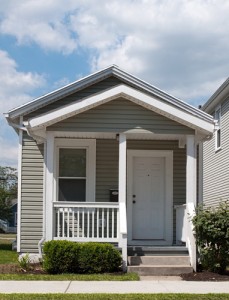 A growing trend in home building in the United States has some homeowners choosing a compact lifestyle rather than seeking larger houses that impose substantial cost burdens and long-term mortgage commitments.
A growing trend in home building in the United States has some homeowners choosing a compact lifestyle rather than seeking larger houses that impose substantial cost burdens and long-term mortgage commitments.
The movement toward these self-described “tiny houses” continues to gain momentum, with more and more individuals, couples and families choosing a dramatically smaller living space.
Tiny homes are defined as residential structures of 500 square feet or smaller. Many are built on trailers to make them mobile and avoid local regulations on permanent residential structures.
Residents who choose tiny homes are finding their scaled-back lifestyle a means to achieve simplicity in their lives, according to Bloomberg. Teachers, writers, performers and other professionals are choosing the “tiny” lifestyle to save money, decrease obligations to a mortgage, and achieve personal freedom that would otherwise not be possible.
Tiny houses are relatively inexpensive to build, with costs generally averaging several thousand dollars. In contrast to larger homes that can easily cost $100,000 or more, tiny homes offer comfortable living spaces at a fraction of the cost.
Homeowners can more easily splurge on construction materials and features that turn their tiny homes into a microcosm of luxury. Hardwood floors, glass exteriors and upscale furnishings are common.
The tiny home lifestyle isn’t for everyone, since it limits possessions and material objects. However, with continued economic uncertainty and consumer unwillingness to take on huge mortgages, the trend shows strong signs of continuing.
Construction Monitor is a leading source of building permit data and housing start information for cities in all regions of the United States. Contact us today for more information on the trend toward tiny houses.
Image via Shutterstock.com
